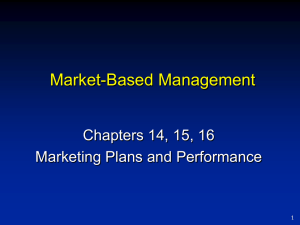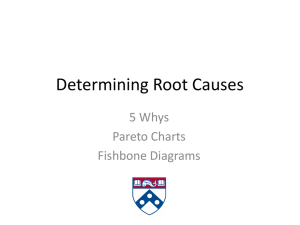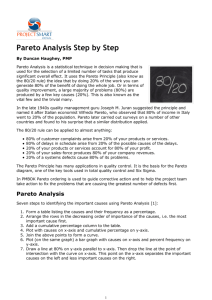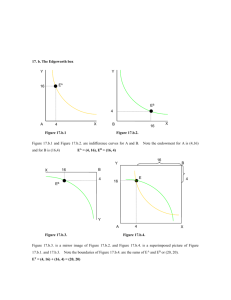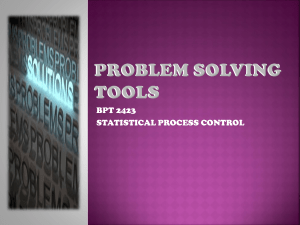Sales Control and Cost Analysis PPT 6
advertisement
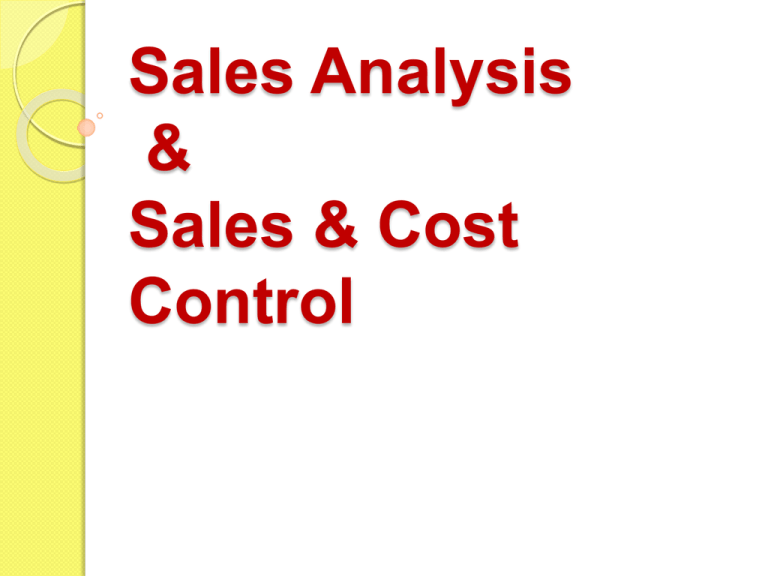
Sales Analysis & Sales & Cost Control Sales Control Management policies and practices aimed at ensuring that all sales are recorded, made at correct prices, and fulfilled to customers' satisfaction. Sales Control and Cost Analysis Companies need to have proper mechanisms in place so that salespeople adhere to the top line and bottom line objectives Sales Audit is a systematic, critical & unbiased review and appraisal of the basic objectives and policies of the selling function and of the organisation, policies, methods, principles and personnel employed to implement those policies and achieve those objectives Ex- TLc in India Salespeople tend to lose sight of this core objective over time; that is why this becomes critical Sales Audit – Areas of Coverage 1. People • Assessment of your key sales and marketing personnel, from the executive team to the sales reps. • Do you currently have the right resources and infrastructure to reach your goals? Processes • Are your current sales and marketing processes operating efficiently and maximizing profits Marketing • Are your marketing activities measured directly with sales increases? Measurements • What are your Key Performance Indicators (KPI’s) and are they being effectively measured, reported, and managed. Technology Are your sales and marketing teams taking advantage of technology to maximize profitability, or are they held hostage to technology that hinders their effectiveness. Strategy- Is your sales strategy in line with your core values? Culture • Is your team farmers or hunters? What is their level of satisfaction and motivation? • Does marketing, sales and other key departments or individuals in your company communicate effectively with each other? • Sales Channels Are you currently utilizing the most effective sales channels for your service or product? Are you effectively managing your current channels to maximize the relationship and profitability? Client Satisfaction Do your clients share the same opinion of you as you do? How do they describe you as a company? Why did your clients choose you? What do they think of the sales process they experienced with your team? Compensation Plans Are your management and staff effectively compensated to achieve sales targets? Are you achieving the right balance between base and performancebased pay? Customer Satisfaction WHAT IS SALES ANALYSIS? Sales analysis is the detailed examination of a company’s sales data and involves assimilating, classifying, comparing, and drawing conclusions. Illustration of sales analysis: Quota Sales +/- % age achieved New Delhi 5 3.78 -1.22 75.6% Mumbai 7 8.35 +1.35 119.28% Hyderabad 4 5.49 +1.49 137.25% Chennai 3.5 3 -0.5 85.71% Bangalore 2.5 2 -0.5 80% Figures in Rs. Million unless otherwise specified The data must then be analyzed in New Delhi, Chennai and Bangalore to ascertain which salesperson (s) in these areas missed the quotas. Then we can further analyze where he missed the quota by factors like sales account type, or by product line Analysis is necessary to uncover the reason for poor performance: 1. Was the quota set too high? 2. Are salespeople having trouble with a particular product line? 3. Can the problem be narrowed down to a particular salesperson, sales district, product, or price line? 4. Do any sales divisions or districts have poor management? Use of Sales Analysis continued • Planning sales force activities. • Evaluation of salespeople’s performance. • Measuring the effect of advertising and other sales promotional activities. • Evaluating channels of distribution. •Modifying channels of distribution The 80/20 or “concentration” principle states that the majority of a company’s sales (or profits) may result directly from a very small number of the company’s accounts, product or price lines, or geographic areas. Pareto principle The term "Pareto principle" can also refer to Pareto efficiency. The Pareto principle (also known as the 80–20 rule, the law of the vital few, and the principle of factor sacristy) states that, for many events, roughly 80% of the effects come from 20% of the causes. Business-management consultant Joseph M. Juran suggested the principle and named it after Italian economist Wilfred Pareto, who observed in 1906 that 80% of the land in Italy was owned by 20% of the population. he also observed that 20% of the pea pods in his garden contained 80% of the peas 80% of your profits come from 20% of your customers 80% of your complaints come from 20% of your customers 80% of your profits come from 20% of the time you spend 80% of your sales come from 20% of your products 80% of your salesIN areBUSINESS made by 20% of your sales staff Therefore, many businesses have an easy access to dramatic improvements in profitability by focusing on the most effective areas and eliminating, ignoring, automating, delegating or re-training the rest, as appropriate. MARKETING COST ANALYSIS Marketing cost analysis, or distribution cost analysis, is the analysis of costs that affect sales volume, with the purpose of determining the profitability of different segment operations. Profitability is determined by sales volume and its associated costs and expenses. Types of MARKETING COSTS Marketing vs. Production Costs A production cost is the cost incurred by processing a product from its raw elements to a finished state. Marketing, or distribution costs, can be broken down into two distinct categories: • Costs incurred by getting orders. • Costs incurred by filling orders. FIGURE 15.1 CATEGORIES OF MARKETING COSTS Marketing (Distribution) Costs Order-Getting Costs • Direct Selling Order-Filling Costs • Physical Distribution • Sales Promotion Shipping • Advertising Transportation • Market Research Warehousing Material Handling • Administrative • Credit and Collection • Administrative USES OF MARKETING COST ANALYSIS • An integral part of the decisionmaking process. • Serves as the basis for management decisions, Allocating sales effort: ‘Iceberg principle’ says that only a small part of the total situation is visible; the rest has to be gauged through sales analysis. There are customers who account for a smaller percentage of sales but time, money and effort to tap them is no less. These situations must be analysed & corrective action taken. The desirable outcome is that allocation be done based on sales potential and actual sales.
